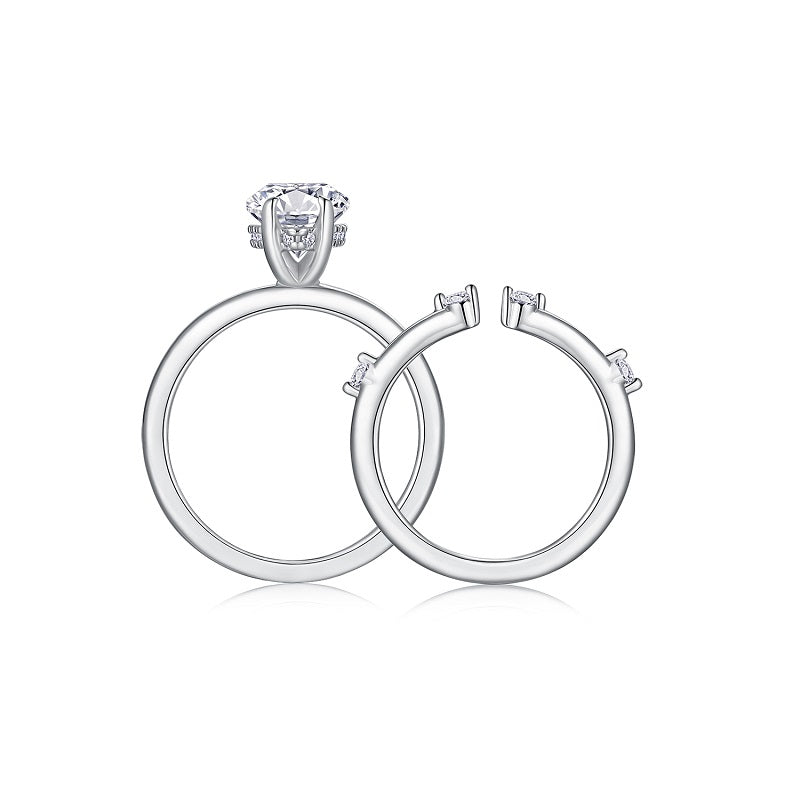Evaluating the Trade-In Value of Moissanite Rings: Key Factors to Consider
Participating in a trade-in program for a moissanite ring involves understanding how retailers assess its worth to determine credit or discounts toward a new purchase. Unlike precious metals or diamonds, moissanite’s value isn’t tied to rarity but rather to quality, condition, and market demand. Below is a breakdown of the critical elements influencing trade-in evaluations.
Assessing Physical Condition and Wear
The most visible factor in trade-in evaluations is the ring’s physical state. Retailers inspect for scratches, dents, or structural damage to the band and setting. While minor wear is often acceptable, significant damage may reduce the offered value or require repairs before acceptance. Regular maintenance, such as professional cleaning and prong tightening, can help preserve the ring’s condition over time.
The moissanite stone itself is also scrutinized for clarity and brilliance. Chips, cracks, or cloudiness from accumulated residue or improper care diminish its appeal and trade-in potential. Buyers should store rings in protective cases and avoid exposure to harsh chemicals or abrasive surfaces to maintain their luster.
Quality Certification and Documentation
Original purchase documentation, such as grading reports or certificates, plays a role in validating the moissanite’s quality. These papers confirm details like cut grade, carat weight, and color clarity, which retailers use to benchmark the stone against current market standards. Rings without certification may undergo additional inspection or receive lower trade-in offers due to uncertainty about their specifications.
If the original documentation is unavailable, some retailers offer re-evaluation services through certified gemologists. While this incurs a fee, it provides an official assessment that could strengthen the trade-in negotiation. Transparency about any past enhancements or treatments to the stone is also crucial, as undisclosed modifications may affect its perceived value.
Market Demand and Retailer Policies
Retailers base trade-in values on their ability to resell the ring or repurpose its materials. Styles aligned with current trends—such as minimalist bands or vintage-inspired settings—often command higher credit amounts due to stronger resale appeal. Conversely, outdated designs or niche aesthetics may receive lower offers if demand is limited.
Policy variations between retailers further influence outcomes. Some programs prioritize customer loyalty by offering above-market credit to retain business, while others adhere strictly to standardized valuation models. In-house trade-in events might also feature promotional boosts, such as bonus credit or waived fees, to incentivize participation. Researching multiple retailers’ terms ensures you secure the most favorable deal.
Timing and Seasonal Influences
The timing of your trade-in can impact its perceived value. Retailers may adjust credit amounts based on inventory needs, offering higher rates during slow sales periods to attract sellers. Seasonal trends, such as increased demand for engagement rings ahead of wedding seasons, could also work in your favor if your ring aligns with popular styles.
Conversely, trading in during peak periods—like holidays or major sales events—might result in lower offers due to heightened competition. Monitoring retailers’ inventory levels and promotional calendars helps identify optimal windows to maximize credit. Some sellers even stagger trade-ins across multiple programs to compare offers and capitalize on fluctuating demand.
Navigating trade-in evaluations for moissanite rings requires a blend of proactive maintenance, documentation, and strategic timing. By addressing physical wear, securing quality proof, understanding retailer dynamics, and aligning with market trends, you can enhance the ring’s trade-in appeal and secure fair value for your upgrade.


Leave a comment
This site is protected by hCaptcha and the hCaptcha Privacy Policy and Terms of Service apply.